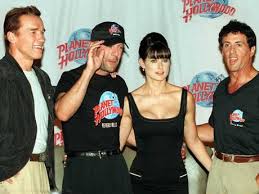Blog : Best and Worst Celebrity Investments
by Peter Leeds on September 22nd, 2015



Hello everyone, this is Mark on behalf of Peter Leeds and all of the analysts at Peterleeds.com.
Today we are discussing some of the worst celebrity investments that have been made, and we’ll see what we can learn from their mistakes. There are also a few successes.
 Beyonce Knowles
Beyonce Knowles
In 2002 Beyonce bought an ocean-facing cabana at the Blue and Green Towers in Miami. This cabana had a mere 190 square feet of space and she paid around $465,000 for it. According to TMZ, she sold the space for only $110,000 shortly afterwards, taking a loss of $355,000.
What made it a such a bad investment decision? Well, we’re guessing that she probably just didn’t care. With a current net worth in the hundreds of millions of dollars, and possibly over a billion when combined with her husband Jay Z, she probably won’t be missing the money anytime soon and didn’t think much about it.
Besides just not caring, she had some very poor timing here as well. Take a look at what happened to the housing prices in Miami just after 2002 when she sold the property… We’ll revisit the “bad timing” concept in just a moment.
Sylvester Stallone, Bruce Willis, Demi Moore, Arnold Schwarzenegger
Sylvester Stallone, Bruce Willis, Demi Moore, Arnold Schwarzenegger, and several other celebrities helped launch the Planet Hollywood restaurant brand. The chain saw great initial success, and who can blame these guys for their involvement given the star power behind the brand. At one time there were more than 100 different locations operating.

The company went public and once traded for more than $30/share, but by 1999 the price had dropped below $1 per share. The business has gone through 2 bankruptcies and currently has fewer than 10 stand-alone restaurants that are still open. The brand has seen a rebound recently and some of you might be familiar with the Planet Hollywood Casino on the Las Vegas Strip in Nevada. However, investors like Arnold Schwarzenegger jumped shipped shortly after the turn of the century when the stock price was at its lowest point.
In this case, it wasn’t so much the nature of the investment that was a bad idea, for a few people it was a great idea and there was lots of money to be made. However, having bad timing and selling company shares when the market price is at an all time low is what turned this into a terrible investment for many of the people involved. But don’t think poorly of them just because of this, many were compensated for their involvement with stock options so some still did just fine depending on when they exercised the options.
 Mark Twain
Mark Twain
At the end of the 19th century, Mark Twain reportedly lost $300,000 on his investment in a typesetting machine called the Paige Compositor. That’s approximately $6 million dollars in today’s money. Soon afterwards he declared bankruptcy, and despite having no legal obligation to do so, he paid back every one of his creditors that he owed money to. Since the internet revolution was still 100 years away, the printing business was a great business to be in and the thought of a new machine that would make the printing process easier would have seemed like an obvious homerun to many investors.
What eventually caused this product to fail was the complexity of the machine and the need for constant manual adjustments. It just wasn’t a practical product for printing companies to implement.
Even though this wasn’t an established product with lots of units already being sold, the potential for what it could do is what made it seem so valuable. It’s the same reason that internet companies in modern times who aren’t even turning a profit are sometimes given billion dollar valuations.
The lesson to learn here: know your product, know the industry, and know the companies that you are investing in. Just being in the right industry at the right time is not always enough to warrant a high valuation based on expected growth. That’s the same sort of mentality that contributed to the Dot Com bubble in the year 2000.
 Kevin Bacon
Kevin Bacon
Kevin Bacon is one of the front runners from this unfortunate group, but the number of celebrities and other investors that lost money in the largest Ponzi scheme ever is long and star-studded. Kevin invested a large chunk of his own money in Bernie Madoff’s securities firm which turned out to be little more than a $65 billion dollar fraud.
At one time, Bernie was the Chairman of the Nasdaq, and who could think of a more reputable person to invest your money with? After all, he wasn’t earning obnoxious returns for his investors, he just appeared to be finding a way to earn money consistently. Even when everyone else was getting crushed, Bernie was able to give his investors a steady return on their money, averaging a little bit more than 10% each year.
As is often the case, if it seems too good to be true, it is - and you know how this story ended. It’s tough to be critical of many of these investors, even in hindsight. Perhaps diversification is the most important lesson to learn from this era. Although Kevin has never said publicly how much money he put into Bernie’s fund, he has indicated that it was a large portion of his wealth and this is what really hurt him when the scheme was uncovered.
 Jim Cramer
Jim Cramer
And finally, someone who many of you may have gotten a few of your own stock picks from; Jim Cramer, who’s hosted the Mad Money show on CNBC since 2005. According to Jim, his worst investment ever was in a computer storage company called Memorex Telex.
He first invested when the stock was trading at about $2/share. As the price dropped, he kept buying hundreds of thousands of shares, and finished off by buying 1 million shares when the price got down to $1. It wouldn’t be until the price dropped down to below 63 cents per share that he decided it was time to call it quits, taking a loss of somewhere in the $1 million dollars+ range.
In Jim’s own words: “You want to buy the stocks that you want at the prices you want”. If you are invested in a really great company that you have a lot of confidence in, buying more shares as the price drops can be a great idea as long as the weakness is for reasons unrelated to the stock.
For example, a general overall market correction period is a great time to invest in a company like Coca Cola or Apple. You just need to make sure that your confidence level is high, and the stock price is not dropping because the actual intrinsic value of the company is dropping.
As a general rule, averaging down your cost basis and buying more shares as the share price drops is ill-advised in the penny stock arena. This is more likely to be a good strategy in the mid-cap and large-cap companies. In Jim’s defense, he had an incredibly successful career as a hedge fund manager, averaging an annual return of 24% for about 14 years, and the charitable trust that he currently runs has had equally impressive results.
Lessons Learned
So what else can we learn from all of these examples? Well, you might be noticing something that many of these investors have in common. They weren’t idiots and these weren’t really bad products, bad companies, or bad ideas. Some of these people are actually known as being extremely intelligent, and there are some great companies, great products, and great ideas that we discussed here.
Sometimes, you just can’t mitigate every risk, and you can’t always see everything coming.
In some cases like with Jim Cramer, he held on too long and got a bit too aggressive by buying more and more shares while the price kept dropping.
For Beyonce, she just didn’t hold on long enough. And... that whole “not caring” thing... probably didn’t help her ROI either.
But consider what happened with Mark Twain and the Planet Hollywood crew. They were in what seemed like the right place at the right time. Planet Hollywood even has the numbers to prove that they had a great idea because they were very very successful for several years. Some things just don’t always go as planned and even when they do, they don’t always last forever. Sometimes it’s best to just take some of your profits off of the table when things are going well.
Mark Twain could have also benefitted from this final and most important lesson of all, the one we learned from Kevin Bacon: diversification is important. You’ve heard the saying “don’t put all of your eggs in one basket” before… Well, the weight of a crashing ponzi scheme is too much for even the toughest basket defense system to handle.
If you want to bet on a sure thing, you can bet that at some point in the future you’re going to get hurt in the stock markets. It’s only a question of how much it’s going to hurt and how easy it will be to recover, so please... don’t put all of your money in one place.
If you want to see some of the companies that Peter Leeds and our analysts DO recommend putting your money into, come on over to PeterLeeds.com and sign up for the newsletter to see our stock picks.
*Jim Cramer photo courtesy of Tulane University Public Relations
You are reading this old blog entry because we still like to reference it. :-)
Get Our Best Low-Priced Investments
- don't have the time?
- can't do all the work required?
- want selections from the authority?
For only $199 per year, we give you our best high-quality, low-priced stock picks. Along with a full team, Peter Leeds is the widely recognized authority on small stocks. Start making money from penny stocks right away.


